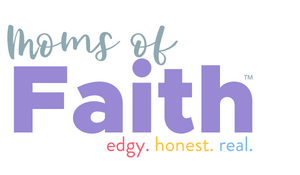How To Teach Your Baby Sign Language
The word is spreading. Sign language is a great way to communicate with pre-verbal babies and toddlers. New moms everywhere are grabbing American Sign Language books and absorbing them feverishly. Pregnancy classes are full of moms teaching each other basic sign language and day care centers across the country are training their teachers in sign language.
Why would you do such a thing?
Some of the benefits of signing are:
Less frustration for baby – Imagine how it feels to grunt and point and not be able to ask for what you want. Put yourself in your baby’s shoes. You’re a baby. You’ve been playing and squealing and laughing and now your mouth is dry and you’re really thirsty for milk. You grunt and point and whine for milk
— and your mother misunderstands and gives you a dry cracker instead, thinking you’re hungry for a snack. You feel very frustrated and possibly angry. You might even throw the cracker back at your mother or hit her out of frustration. What if, instead, you could simply sign milk and get milk? Pure bliss!
Bonding with Parents – Babies who sign are able to interact and be acknowledged at a younger age. Picture you and your baby looking at a book about elephants. She can show you that she understands the story by signing “elephant” to you well before she could say the three syllable word “elephant”. You know that your baby understands and is benefiting from the story and you
can respond “yes, it is a big elephant”, thereby rewarding her for her efforts.
Sibling bonding – Older siblings are given the tools to bond with their new brother or sister sooner, because the baby can sign, well before speech is possible. Not only is there a bond, but I’ve witnessed a sense of camaraderie because the older sibling can act as an interpreter for the baby in situations
with non-signing adults.
How to start:
You may, at this point, feel overwhelmed. After all, you are learning a second language — with no one to teach you. Please don’t worry. First of all, you only need to learn a few words to being signing with your baby.
Begin with 4-6 words — choose a few words that are of importance to you (words that will make your life easier, like eat, milk, more, etc.) and also choose some that are of interest to your baby (for instance, airplane, ball, book, dog, cat, baby, etc.). This ensures that both of you are rewarded for your efforts.
Once you choose a few words, you can begin signing whenever you say those words. When your baby cries, you say “Do you want milk?” Then, sign milk at the baby’s eye level so she will begin to associate the cause and effect and realize hands MEAN something!
At what age should you start? You can start from birth on. The earlier you start, the more time you, as the parent, will have to get comfortable signing. Babies 6 months and older will begin to watch your hand movements. Babies 8 months old may begin to make very rudimentary attempts to sign back to you. By one year, your baby will likely be signing regularly.
If you have an older baby or toddler who is having frustration issues or is a late talker, begin signing. Start today. Toddlers pick up signing very quickly.
Don’t think you have to learn an entire language for this to work. Just learn one sign today and get started. Enjoy the gift of communicating with your baby!
About the author: Nicole Dean is the owner of showkidsthefun.com/baby.html, a fun resource for parents to spend time with their children. For more help getting started signing, check out SIGN with your BABY Complete Learning Kit showkidsthefun.com/signkit.html

Hi, we taught our son baby sign language too, and it made for some funny anecdotes with the grandparents which I share on my blog… :) Love the article!